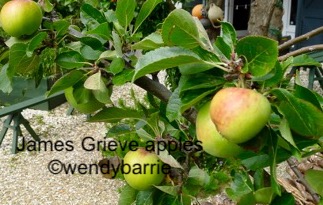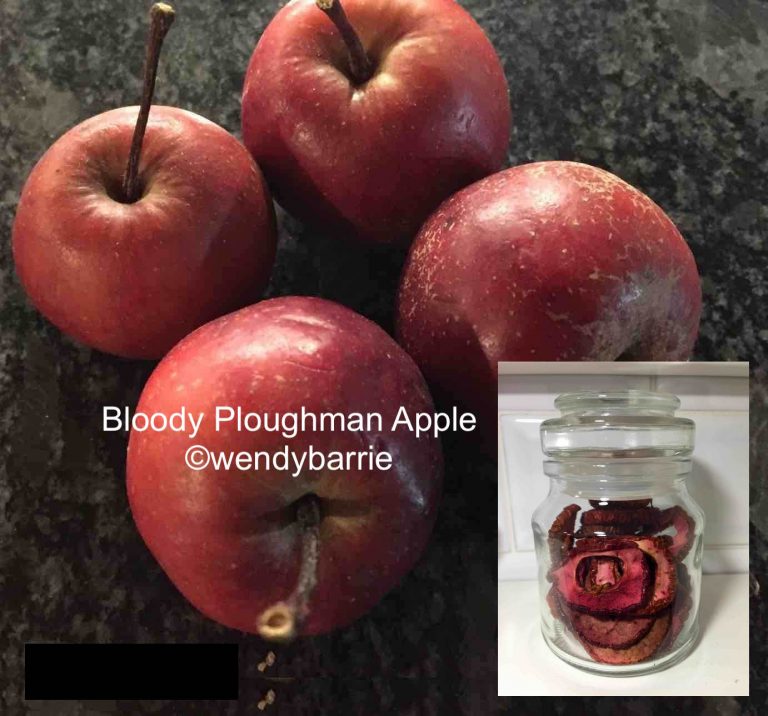Profile
Scotland has a delicious range of heritage apples on the Ark of Taste. They vary in flavour, colour and texture and are rarely on sale but are available as root stock to grow, as an increasing number of enthusiasts are doing. Each apple link takes you to Slow Food International website for full info on each one.
Our different varietals are threatened by supermarkets and their market dominance, providing a very small range of apples, often imported, when we have such a rich heritage of orchards right here in Scotland. Sadly many orchards disappeared, to be replaced by monocultures or housing developments however there is a revival with the planting of new orchards in recent years. One such orchard is at Errichel, where Slow Food Supporters could sponsor an Ark Tree. Errichel is in Perthshire, a working farm with restaurant & self catering owned by Becky & Paul Newman, Paul being a member of the SF Cooks Alliance.
James Grieve: a very Scottish variety with strong historic links to Edinburgh. It is sharp & juicy – a delicious & attractive apple. It is popular as a garden variety again having been out of fashion & rare to find. It is a dual-purpose apple variety, raised in the height of the Victorian period of apple development. James Grieve developed this apple around 1893 & received the Award of Merit in 1897 & First Class Certificate in 1906 from the Royal Highland Show in 1993. It is a mid-season variety picked in early-mid September. James Grieve
Beauty of Moray: an old Scottish cooking apple, first recorded in 1883, a favourite in the Highlands. A hardy, moderately vigorous tree with attractive small pink blossom, it is noted for its beauty, flowering mid-season thus overlapping with almost all other trees, so pollination is not a problem, making it less susceptible to frost. The ribbed fruit is medium-sized, with a bright green skin & a sharp flavour, ready in September. It cooks to a frothy cream purée & is high in pectin, ideal for jellies & baking. Beauty of Moray
Cambusnethan Pippin: a good firm eating apple of Clyde Valley origin, possibly from 1750s, with suggestions of its origins from the local priory or mansion house. This valley is very beautiful & special, with a micro-climate that made it particularly popular for growing fruits It is green with red striations & a noticeable flat top. It has a fresh, slightly nutty taste. Cambusnethan Pippin
Bloody Ploughman: Due to the memorable story of its inception, this apple engages the imagination & is also both beautiful & delicious. The story goes that a ploughman was caught stealing apples & shot dead by a gamekeeper. When his body was returned to his wife she found stolen apples in his pockets that she threw on the midden. One of the seedlings bore apples of a deep, blood red, giving rise to the variety named after the unfortunate ploughman. First recorded in 1883, it originates from the Carse of Gowrie, near Dundee. It is a medium to large apple, flat-round in shape, with ribs. It has dark red skin and its juicy flesh can be stained pink. It has a sweet, light flavour and grows on a vigorous tree. Bloody Ploughman
Note: map pin not relevant – just parked at Scottish Food Guide HQ




